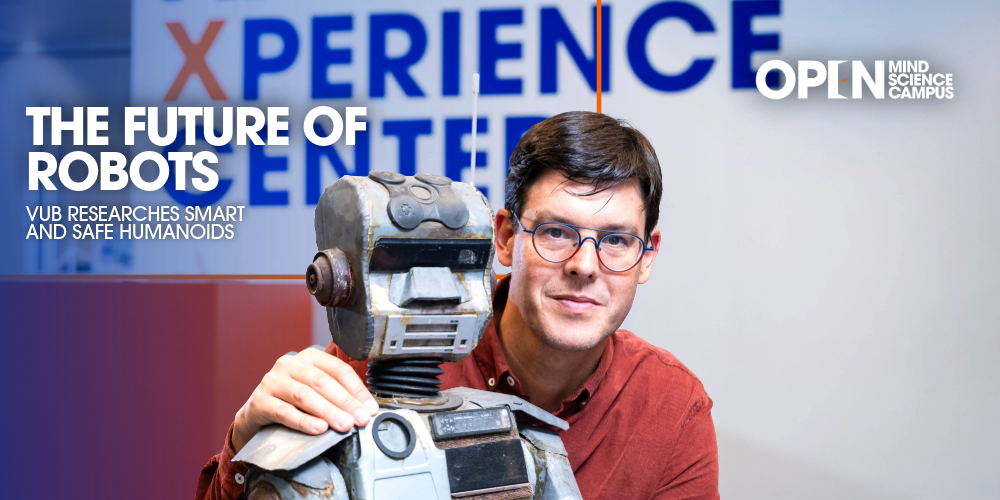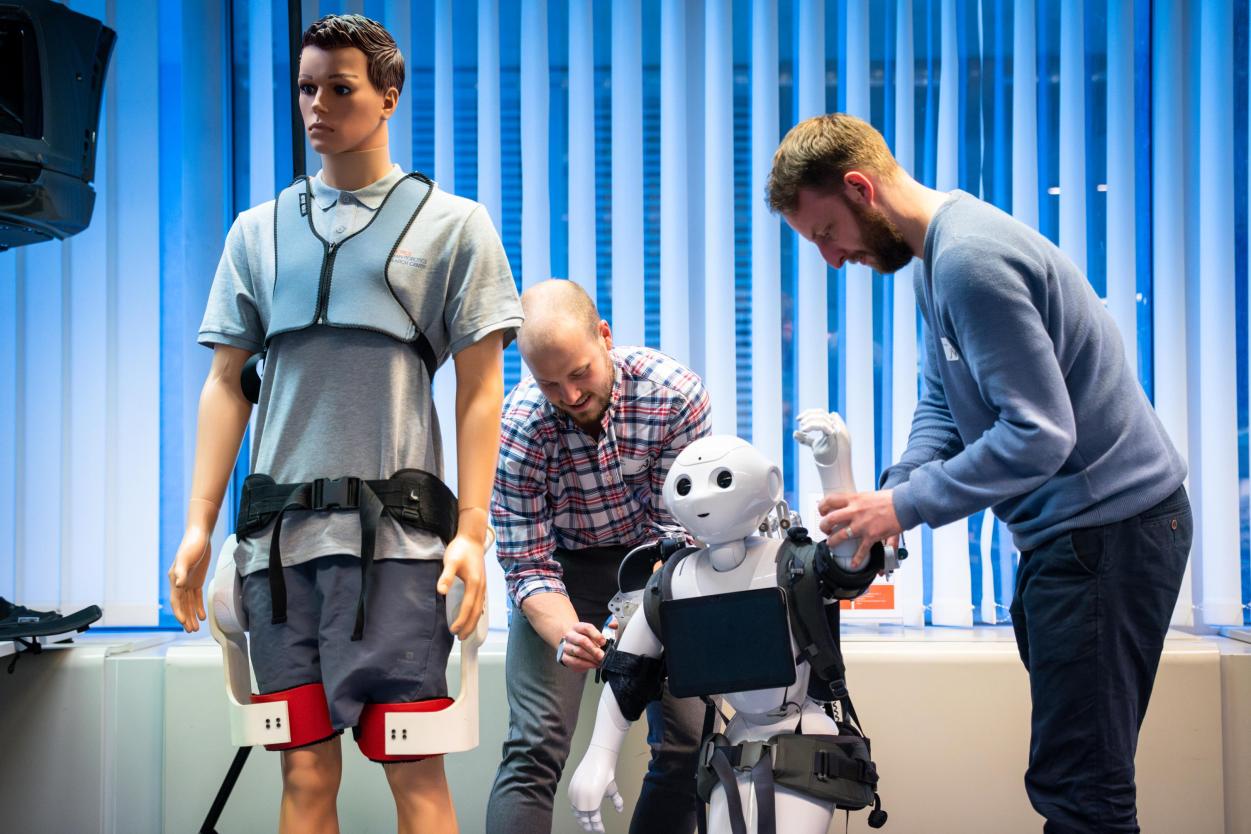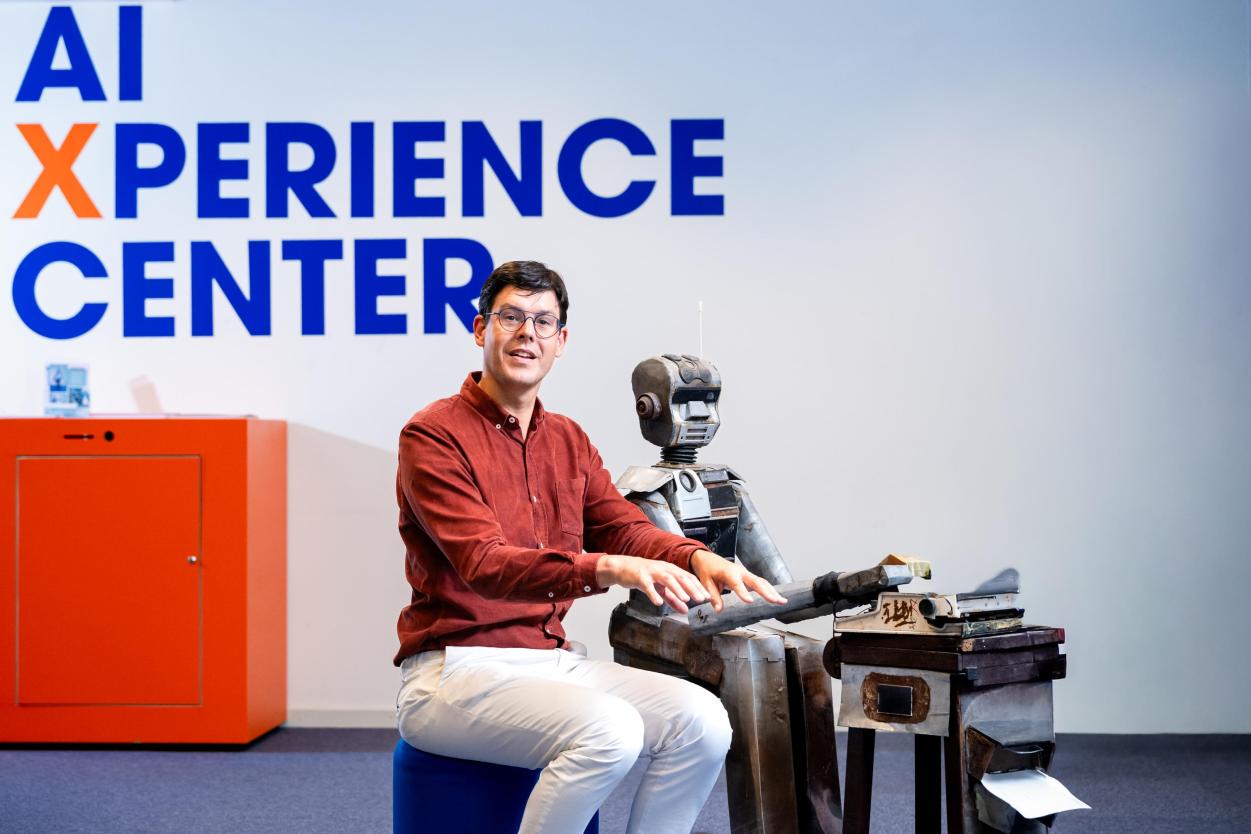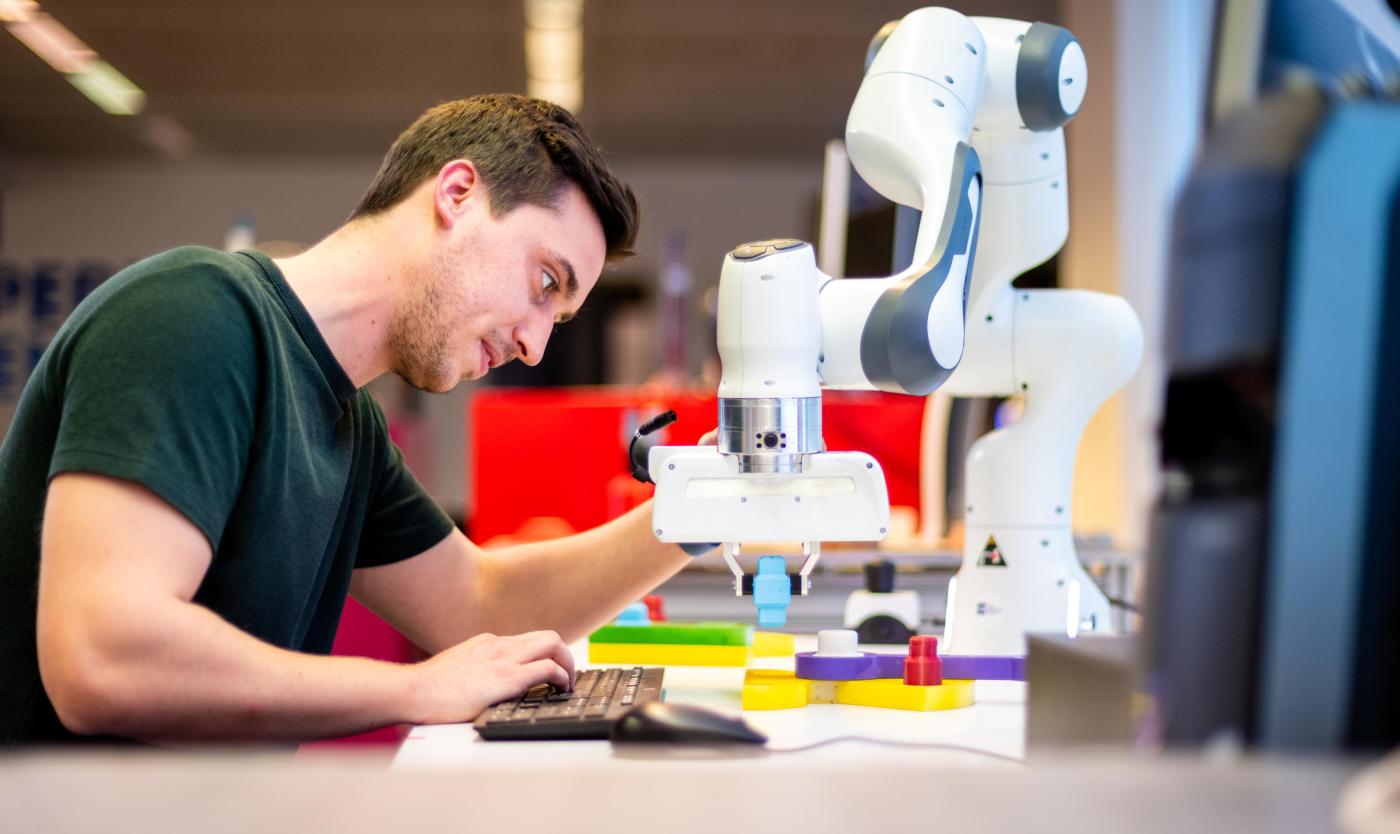
A household robot that vacuums, unloads the dishwasher, mows the lawn, and even drills a hole in your wall? It may sound like science fiction, but according to Professor Bram Vanderborght (VUB research centre BruBotics), that future is fast approaching. “With mass production, robots could become as affordable as an average car.”

Bram Vanderborght
Is Vanderborght right, or simply too optimistic? Big names such as Mark Zuckerberg, Elon Musk and James Dyson are already investing in smart humanoid robots. Yet many tasks remain a dream for the future. When Vanderborght recently hired a digging machine, it refused to work. “I felt it in my back. (laughs) Robots won’t be taking over those kinds of jobs anytime soon. A lot of technical work requires far more dexterity than you’d think. Skilled workers need not worry: much work will always remain human work.”
What can humans do so well?
Bram Vanderborght: “Humans have senses, brains, and muscles to observe, explore, and manipulate our surroundings. Robots need to do the same, but with sensors, processors, and motors. Intelligence is not just in our brains, but also in our bodies – what we call embodied intelligence. Our bodies evolved to do things ‘without thinking’, like walking through a forest or picking up a stick. Millions of years of evolution fine-tuned that ability. The challenge is designing robots that can imitate even these seemingly trivial actions as well as possible.”
For that processing, are AI algorithms used more and more?
“Not exclusively. The famous dancing robots from Boston Dynamics (Do You Love Me? on YouTube) don’t actually use artificial intelligence. They rely on models based on Newton’s classical laws of motion – describing the relationship between force and movement. From this, you can precisely calculate the forces needed to spin, jump, or grab an object. That’s called model-based control.
Outside the lab, this often isn’t enough, because the real world is complex and unpredictable. Since we don’t have models for everything, AI steps in. The best robots will combine both: a model-based foundation to prevent unsafe behaviour, such as colliding with humans, and an AI layer to learn new tasks.”
“If robots are to walk among humans, safety will be the number one priority”
Is this comparable to ChatGPT-style AI?
“ChatGPT is a large language model trained on vast amounts of text. That works well because the internet is overflowing with text. For human-robot communication, ChatGPT is relevant. Work is now expanding to images and videos, which require enormous amounts of data and computing power. Robot control, however, needs even more sensor data – and we rarely have massive datasets.
Humans don’t need huge data volumes to learn. Children learn astonishingly quickly. Yesterday, my son saw a hot-air balloon shaped like Spongebob on Karrewiet. Thanks to the context, he immediately recognised it as a balloon. AI might have just seen the cartoon character.”

Massive data and computing power – that doesn’t sound very sustainable?
“That will indeed be a challenge. Computers controlling self-driving cars already process huge amounts of data and therefore consume enormous energy. Humanoid robots will have hundreds of sensors, so computing power will explode. We’ll need to develop new chips, sensors, hardware and software to cut down energy consumption.”
What other hurdles remain?
“Safety is the number one challenge. Teaching a computer to play chess or running ChatGPT happens in a virtual world. Mistakes don’t hurt anyone. With robots it’s different. They share our physical space. That makes safety an absolute priority. Robots must not harm people, their surroundings, or themselves.”
Like self-driving cars, which still sometimes cause accidents. Are they robots too?
“A modern car isn’t fully autonomous – the driver still needs to stay alert. But with its sensors it can detect the environment and potential risks. In that sense, yes, it’s a robot. The same goes for drones. If you command one to fly forward but it sees a wall, it won’t execute the command. A model aeroplane, by contrast, will crash if you steer it into something – that’s not a robot.”
“In care homes, robots could deliver meals and medication”

What do we still need to invent for robots to perform real-world tasks?
“Touch sensors. Seeing, hearing, speaking… those are less of a problem. We can borrow technologies from other sectors like gaming or telecom. But touch – true physical interaction – is another matter. That’s something robotics itself must invent.
Skin is our largest organ, but for robots it’s currently little more than a plastic shell. We can hold a pen, rotate it, let it slide between our fingers… Robots need to master that too. They’ll need sensors that measure not just pressure but also friction and shear. Belgian company Melexis is developing such 3D force sensors for robots – we’re collaborating to bring them into robotics. With Imec we’re developing a new sensor skin to measure distances, so robots can work faster yet safely with humans.”
So it sounds like a long road ahead?
“In 2023 many new humanoid companies were founded. We’re now at the start of the Gartner Hype Cycle, the curve every new technology follows. First comes buzz. Then hype with inflated expectations. After the peak comes the ‘trough of disillusionment’: the tech isn’t as revolutionary as hoped, and interest dips. Next, realistic applications emerge, leading to practical implementation. In the end, the technology often outperforms expectations. We tend to overestimate the near future and underestimate the distant future. That was true for the mobile phone and AI. It will be true for self-driving cars and robots too.”
Where do you see robots working in that distant future?
“In healthcare, hospitality, agriculture, horticulture… anywhere there’s a shortage of staff. The key is deciding what to automate and what not. In a care home, for instance, a robot could move patients, deliver meals, and bring medication. That frees up caregivers for human contact.”
“Robots won’t steal jobs, they’ll work with us”
So they won’t take away jobs?
“We’ll collaborate. Robots are precise and tireless. Humans are creative and versatile. We complement each other.”
Will everyone be able to afford one?
“Today a humanoid robot is like a Ferrari – hand-built and very expensive. But with mass production, they’ll become as affordable as a regular car. And if you think about all the technology that goes into a car, that’s cheap.”
Are Flanders and Europe ready for the robot revolution?
“Research receives strong support, but the leap to startups and businesses is huge, because developing hardware costs so much. Europe still has big robotics companies like ABB, Siemens, and Kuka – though the latter is now largely in Chinese hands. We must make the right choices now. Economically and geopolitically it’s vital to keep both design and production here. Elon Musk says: design is overrated, production underrated. His real innovation wasn’t the Tesla, but how it was built at scale for an affordable price. Let’s not repeat past mistakes, where knowledge is built up here, but profits and monopolies end up in the US or China.”

What role does VUB play in all this?
"Our BruBotics research group coordinates various European research projects and launches spin-offs, hoping to stimulate entrepreneurship. For example, the VUB spin-off Axiles Bionics develops intelligent ankle-foot prostheses that combine robotics, artificial intelligence and human biomechanics. The company has been selected for the federal campaign Belgium. Open for Business campaign and will showcase its technology at the 2025 World Expo in Osaka. The VUB AI Experience Centre in Etterbeek also bridges the gap between research, entrepreneurship and society. It is a high-tech testing and demonstration space where companies, researchers and the general public collaborate on AI and robotics. On the other hand, we also try to contribute to the various facets of the UN Sustainable Development Goals. It remains quite a challenge."
VUB AugmentX lab for human-robot collaboration
In early 2025, the Vrije Universiteit Brussel, in collaboration with Flanders Make, opened the AugmentX lab: an advanced research centre dedicated to optimising human-robot collaboration in the workplace. Led by the BruBotics research group, the lab offers innovative tools and methods for analysing workplaces and refining the division of tasks between operators and cobots. AugmentX also investigates how new technologies can alleviate physical workload and makes that impact measurable.
Interview with AugmentX coordinator Tom Turcksin and Professor Tom Verstraten (BruBotics)